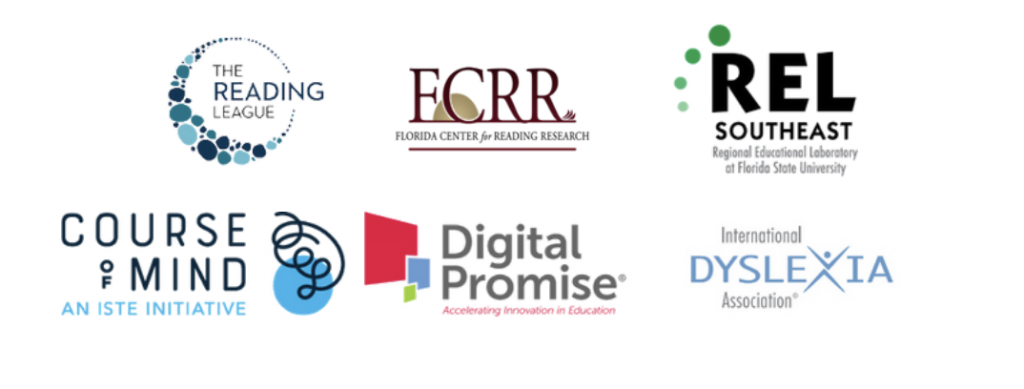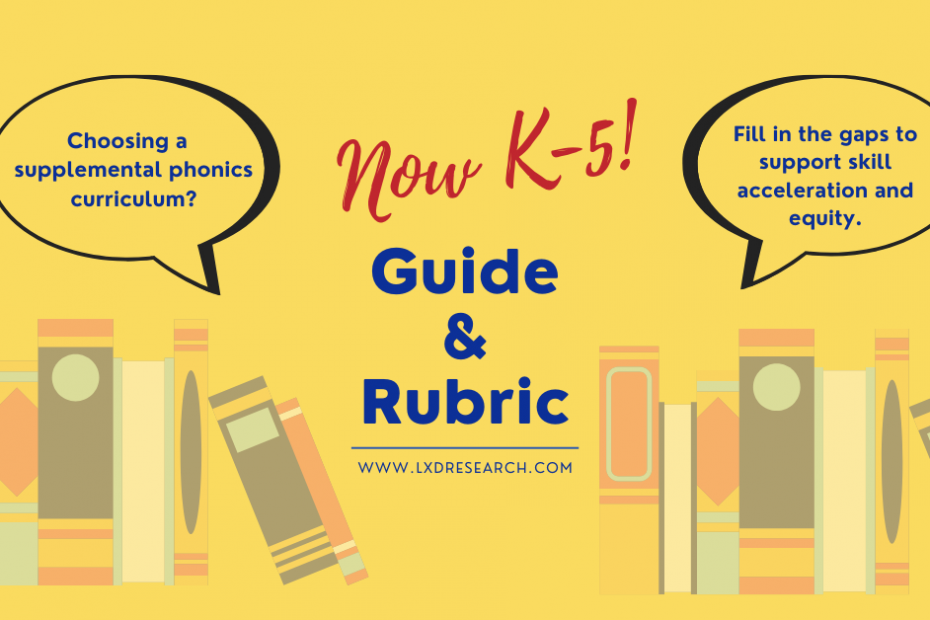Co-authors Rachel Schechter, Ph.D. founder of LXD Research & Kathleen Richards, Literacy and Language Learning Scientist
Figuring out all this “Science of Reading” stuff could take years. Students’ scores are still lagging behind post-COVID – and they can catch up with the right tools! Making a change to your ELA curricula starts here and now.
ELA core programs are one-size-fits “most” earners. They leave gaps. Supplemental phonics programs can help, but which one should you choose? Supplemental phonics programs exist by design to address the structural gaps and issues in the core curriculum. However, it’s up to educators to ensure that they select the right one to fill in the gaps and meet the needs of their particular students. This is a heavy and confusing lift that requires help – a guide!
LXD Research’s pedagogically informed and industry-responsive Supplemental Phonics Evaluation Guide and Rubric exists to help educators identify the gaps in their K-5 core program and select a supplemental program to transform student skill gains. Grounded in the science of reading and the learning sciences, the guide assists in examining how well programs provide comprehensive coverage of early literacy skills and use a structured literacy approach. Teaching training cannot replace an effective literacy toolkit. This rubric helps you gather the data to make the necessary changes to increase the percentage of students reading proficiently by the end of third grade and thriving comprehenders ready for middle school.
What’s in the rubric?
The rubric builds on the previous experience of educators in reviewing programs (The Reading League, FCRR, ISTE, Digital Promise, IDA, and IES). It aims to help them identify effective supplemental phonics programs, whether they are already in use at the school or educators are looking for an additional program to fill the gaps. The rubric gives you actionable knowledge about three focus areas:
- Content — “What is being taught?”
- Pedagogy — “How is content taught?”
- Ensuring Acceleration and Equity — “How are all my students’ needs being met?

Content
The Content portion of the rubric walks reviewers through an evaluation of how thoroughly critical areas of early literacy development are covered, including print concepts, phonological and phonemic awareness, basic phonics, advanced word analysis, fluency, language, and writing. The Science of Reading shows that reading doesn’t come naturally and requires the brain to r wire itself. Teaching all of the key literacy skills provides students with the brain wiring to read fluently and critically.
Pedagogy
If the content is like the major structures of a house, pedagogy is like the building methods used during construction. A sloppy build won’t last long, even if all the parts are there. Successful reading depends not only on teaching the right set of skills but teaching them explicitly and systematically, which is evaluated using the Pedagogy section of the rubric. Students can’t be expected to figure out the complexities of the English spelling system independently, but they can learn them with direct instruction, modeling, and guided support.
Ensuring Acceleration and Equity
Based on research from the learning sciences, the rubric’s Ensuring Acceleration and Equity portion considers student-centric aspects of supplemental programs to evaluate how adaptable and responsive they are to the various ways people learn. Programs that address learner variability through detailed assessment, meaningful feedback, and targeted practice have the greatest potential to work with the m st students. Becoming a skilled reader takes hard work, and struggling with reading is defeating, so motivating features that make students feel engaged and successful can build their confidence and show them the joy of reading.
If your students struggle with reading despite being immersed in an ELA core program, use the LXD Supplemental Phonics Evaluation Guide and Rubric to identify and invest in curricular approaches and materials that align with the needs and goals of your students and your learning environment.
How do I start using the Rubric?
Download a (free!) copy of the LXD Research Supplemental Phonics Evaluation Guide and Rubric to get started! Reviewing the content of a program is an active and collaborative process. The rubric is designed for reviewers to rate program materials independently and then come together to discuss each person’s insights to support dec ion-making. Print the Sample Evaluation Worksheet – the Worksheet, like the guide, is designed to be easy to use and customizable to your local needs!
With the data collected from this systematic and comprehensive rubric, you’ll have the evidence you need to change your literacy toolkit to transform student learning.
